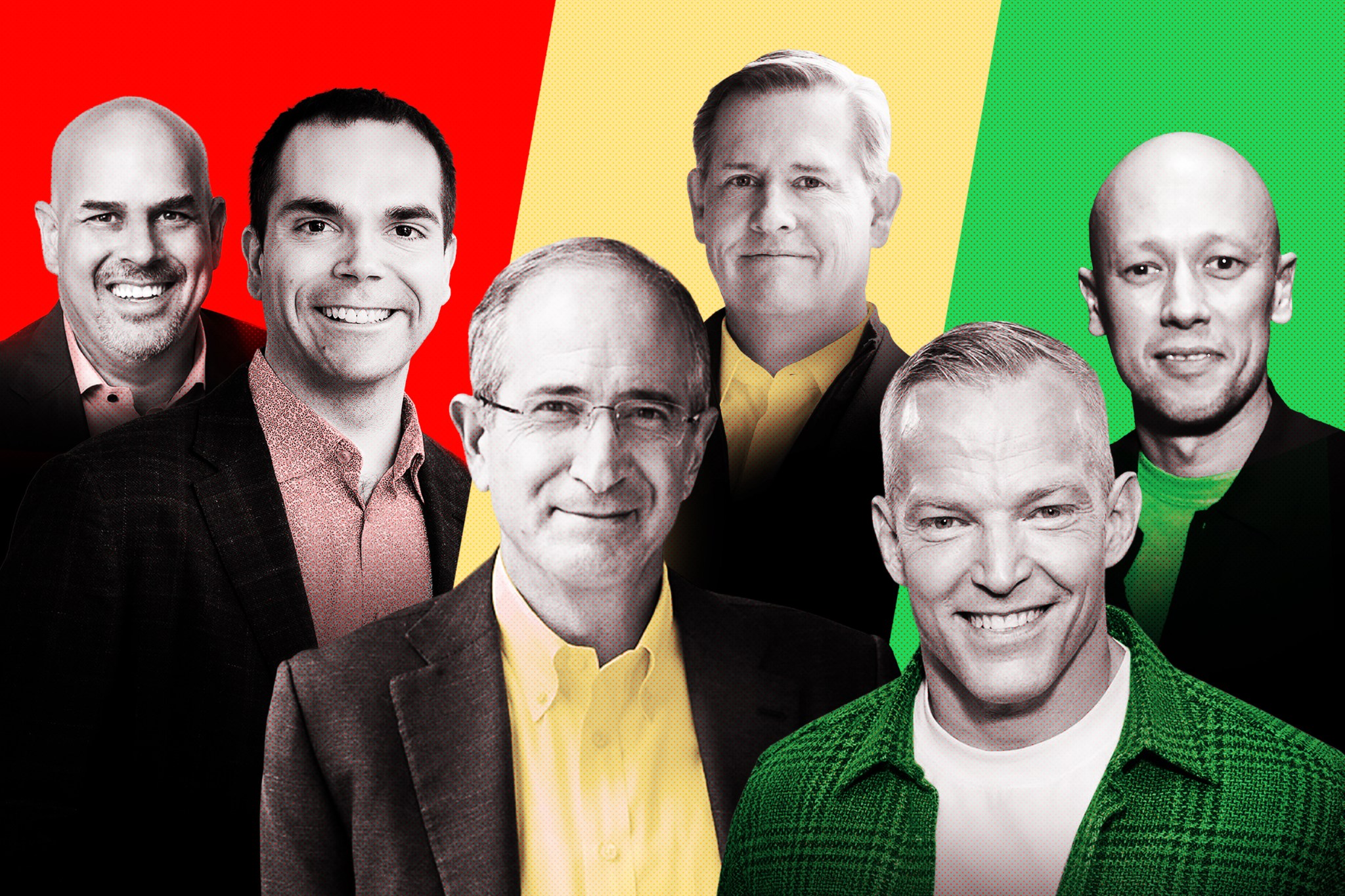
Yesterday, Spotify founder and CEO Daniel Ek announced that he’ll be stepping down in the new year. Two of his top executives, Gustav Söderström, chief product and technology officer, and Alex Norström, chief business officer, will take over as co-CEOs in his place.
With that news, the music streamer became the third company to choose the co-CEO route within the space of just over a week. A few days earlier, on Sept 29, Comcast said that its sitting CEO Brian Roberts will be joined by Michael Cavanagh, former president, in January. (The arrangement is being read as part of a succession plan.) And at Oracle a week before, ex-CEO Safra Catz moved into the vice-chair role, and was replaced by Clay Magouyrk, former head of Oracle Cloud Infrastructure, and Mike Sicilia, who previously ran Oracle Industries.
The trio of announcements was remarkable, and points to a micro trend: leaders sharing the corner office, a practice previously more common for private equity firms and various outliers, like Netflix. It’s also notable that all the members of the new gang of co-CEOs are men.
This isn’t a big surprise: Men dominate C-suites and the CEO job in corporate America. And the men who won new roles this month may be the best or most obvious candidates within their peer groups. Still, when companies choose to double the number of people holding the top title, one might assume it would improve the odds that a woman would be tapped for the job. At one time, before DEI became a fraught topic, companies proudly touted their commitments to gender diversity in leadership.
But Fortune has found that mixed-gender co-CEO pairs are exceedingly rare, recently and historically. Although women co-CEOs are not unusual among women-founded startups, female co-CEOs at large firms are even rarer than women running companies solo.
By the numbers
Here’s what the data show: Among Fortune 500 companies, just 11% of organizations are led by women—though one in 10 is a high point after years of slow progress. Our Fortune 500 Europe and Fortune 500 Global lists also show women lagging far behind men in CEO jobs, with women running only 6% of companies on both rankings.
And when we looked back at Fortune 500 data on co-CEO setups stretching back to 1998, we found only three examples of paired chief executives that included women. We could not find any examples of two women sharing the CEO job at a Fortune 500 firm.
For decades, Herbert and Marion Sandler, a couple, ran Golden West Financial before it was purchased by Wachovia in 2006. At Intel, two interim co-CEOs were in charge this year during the three-month gap between one CEO’s departure last December and a new leader’s appointment in March. And at Oracle, Safra Catz and the late Mark Hurd shared the co-CEO job for five years, from 2014 until 2019, when Hurd died from an undisclosed illness. (One caveat: This is based on data from Fortune’s yearly Fortune 500 rankings, which offer snapshots of corporate leadership at the time of publishing. If other women were appointed to short-lived co-CEOs roles between our publishing dates, we may have missed them.)
Around the world, there are other examples: the UK-based department store Marks & Spencer’s appointed a mixed-gender duo in 2022, and the pair shared the job for two years, and the German software leader SAP appointed mixed-gender CEOs in 2019 who worked together for one year before reported issues with disorganization led to a split-up. In both cases, the women co-CEOs departed and the men stayed on as sole CEOs.
“Male prodigies fight it out”
Our findings reflect a leadership pipeline problem that has been well-covered by Fortune over the years: Women are still not sitting in the most powerful roles within the C-suite, namely the CFO and COO jobs, which are more likely to produce future CEOs. Boards and executive leaders are not doing enough to put women on the path to the top job. The few women who do crack the C-suite tend to hold roles like CHRO, CMO, or general counsel.
At Free Float Analytics, an independent research firm that studies boards and executive leaders, analysts Matt Moscardi and Damion Rallis have also analyzed women in the C-suite and on the boards of the many companies going public this year. As Fortune first reported, they found what they called a “Bro IPO” trend this summer with women representing only 11% of 205 executives in leadership roles listed in IPO filings in the first half of August. Stepping back, they saw the same trend when they looked at IPOs for the first seven months of 2025.
According to their analysis of securities filings, 86% of the executives at companies that filed to go public in that time period were men, a significant hike compared to 2024, during which men made up 63% of executives at companies making their trading debut. (They found one co-CEO pairing in the IPO data. The co-CEOs were both men.)
Rallis points out that in many cases, the co-CEOs are essentially competing for the favor of a still-powerful founder or former chief executive. At Spotify, Ek is moving into an executive chair position, meaning he will have ultimate control over major decisions. And Larry Ellison, Oracle’s co-founder and one of the richest people in the world, remains chairman of Oracle Corporation and its chief technology officer. They “don’t actually cede control, they stick around to maintain order and dominance,” Rallis says, likening all-male co-CEO appointments to “a CEO Hunger Games to amuse the king.”
“I see it as male dictators with so much power and ego that they let their male prodigies fight it out to see who will become top dog,” Rallis says.
Coco Brown, CEO of Athena Alliance, a membership organization for senior executive women, says that she sees the bro IPOs and recent data showing women’s power slipping as part of a recent shift toward embracing “masculinity” in the corporate setting, as Meta CEO Mark Zuckerberg put it during his appearance on The Joe Rogan Experience podcast in January.
“In some part of the zeitgeist,” Brown says, “there’s this backlash to the sense of femininity being brought into the workforce.” There’s a feeling, she added, “that we’ve softened the workforce and it needs to get some grit back and some guts back.”
But she also suspects this batch of appointments may be part of a more familiar story— when a man in power says, “I get to choose my buddies. I get to choose what’s comfortable.”
This story was originally featured on Fortune.com











![71% of People Support Social Media Bans for Children [Infographic]](https://whizbuddy.com/wp-content/uploads/2025/10/Z3M6Ly9kaXZlc2l0ZS1zdG9yYWdlL2RpdmVpbWFnZS9zb2NpYWxfbWVkaWFfYmFuZHMucG5n.webp.webp)



